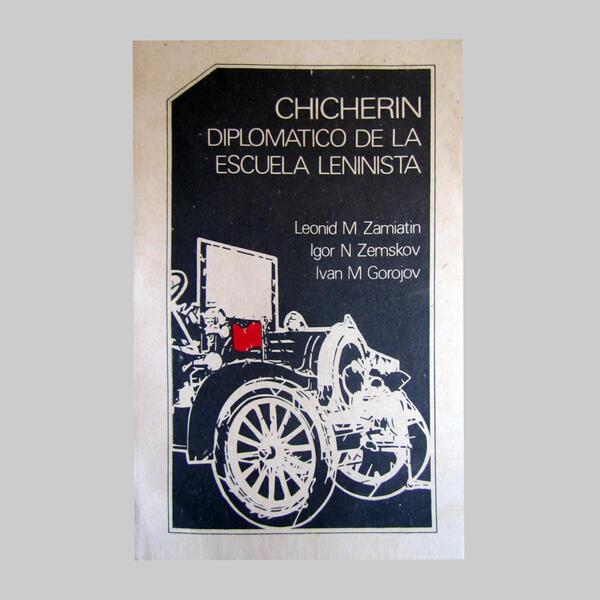In 1966, the Publishing House of Political Literature of the Central Committee of the CPSU published in Russian the book ‘Chicherin, a Diplomat of the Lenin School’ by Igor Zemskov, Ivan Gorokhov and Leonid Zamyatin. On 112 paperback pages, the trio of scholars and public figures collected documentary materials about the personal and professional qualities of a person who managed to live as an imperial nobleman, a European émigré and a Soviet revolutionary.
17 chapters consistently reveal the fate of Georgy Chicherin: from childhood to retirement. The biographers brought together the man’s personal statements, his correspondence with family and friends, the memories of his colleagues, as well as documentary materials. Many historical facts were published for the first time.
A significant place in the study is occupied by the description of more than 10 years that Georgy Chicherin spent in the service of the Ministry of Foreign Affairs of the RSFSR and the USSR. Over the years, he took part in international meetings and the signing of documents between various states. For example, at the Genoa and Lausanne conferences, in the conclusion of “treaties of friendship” with Persia and Turkey. Each such step brought the fatherland closer to a way out of diplomatic isolation.
Georgy Chicherin believed that Soviet diplomacy had its own path, since “its first demand is its deep desire for peace, its deeply peaceful character, » because “it always and everywhere supports the interests of universal peace, for these are the interests of the working masses of all countries”.
An equally important point in the book is the disclosure of the relationship between Georgy Chicherin and Vladimir Lenin. In the first years of his work at the Ministry of Foreign Affairs, they were in “almost continuous contact.”
According to the People’s Commissar, he ‘talked to him (Vladimir Lenin) on the phone several times a day, sometimes having very long telephone conversations with him, except for frequent direct conversations, and often discussing with him all the details of any important current diplomatic affairs.’
It is not surprising that the brochure was of interest not only to domestic readers, for whom it was reprinted several times. In 1984, in Cuba, it was translated into Spanish under the name ‘Chicherin - diplomatico de la escuela leninista’. The volume was already 175 pages long.
This copy for 1988 was presented to the house-museum by a delegation of diplomatic workers from Cuba, who specially came to the ‘small homeland’ of Georgy Chicherin.
17 chapters consistently reveal the fate of Georgy Chicherin: from childhood to retirement. The biographers brought together the man’s personal statements, his correspondence with family and friends, the memories of his colleagues, as well as documentary materials. Many historical facts were published for the first time.
A significant place in the study is occupied by the description of more than 10 years that Georgy Chicherin spent in the service of the Ministry of Foreign Affairs of the RSFSR and the USSR. Over the years, he took part in international meetings and the signing of documents between various states. For example, at the Genoa and Lausanne conferences, in the conclusion of “treaties of friendship” with Persia and Turkey. Each such step brought the fatherland closer to a way out of diplomatic isolation.
Georgy Chicherin believed that Soviet diplomacy had its own path, since “its first demand is its deep desire for peace, its deeply peaceful character, » because “it always and everywhere supports the interests of universal peace, for these are the interests of the working masses of all countries”.
An equally important point in the book is the disclosure of the relationship between Georgy Chicherin and Vladimir Lenin. In the first years of his work at the Ministry of Foreign Affairs, they were in “almost continuous contact.”
According to the People’s Commissar, he ‘talked to him (Vladimir Lenin) on the phone several times a day, sometimes having very long telephone conversations with him, except for frequent direct conversations, and often discussing with him all the details of any important current diplomatic affairs.’
It is not surprising that the brochure was of interest not only to domestic readers, for whom it was reprinted several times. In 1984, in Cuba, it was translated into Spanish under the name ‘Chicherin - diplomatico de la escuela leninista’. The volume was already 175 pages long.
This copy for 1988 was presented to the house-museum by a delegation of diplomatic workers from Cuba, who specially came to the ‘small homeland’ of Georgy Chicherin.


